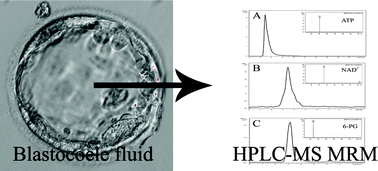A mass spectrometry-based targeted metabolomics strategy of human blastocoele fluid: a promising tool in fertility research†
Abstract
Embryo assessment is currently performed through the analysis of morphology and cleavage rate. Recent studies have sought to identify a correlation between quali-quantitative profiles of small molecules of metabolic interest and the outcome of embryo transfer. Approaches relying on both optical and non-optical

- This article is part of the themed collection: Italian Proteomics Association

 Please wait while we load your content...
Please wait while we load your content...